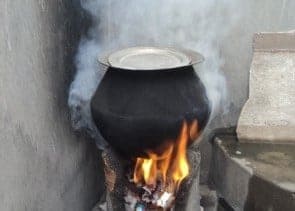‘Beat Air Pollution’ is the rallying call issued by China, which is hosting this year’s World Environment Day celebrations. And China knows how to beat air pollution, for it has worked hard the past two decades doing just that.
According to a report released this March by the Beijing Municipal Ecology and Environment Bureau, 20 years of tough action has produced the following results: “the average concentrations of sulfur dioxide, nitrogen dioxide, and fine particle PM10 dropped by 93.3, 37.8 and 55.3 percent respectively in Beijing. The PM 2.5 content in the air reduced by over 40 percent.”
United Nations had declared June 5th as World Environment Day in 1974, to help broaden our understanding of the consequences of the current development paradigm that is based on reckless consumerism and extraction of natural resources. Environment Day also points to the urgent need to be more responsible for our actions as individuals, communities, corporates and countries.
Over the past four decades, our worsening air quality has gained critical attention. Also, the science of understanding and predicting air pollution’s impacts has advanced significantly. What we now know is that the air we breathe is so bad, it kills. As the Lancet Commission on Pollution and Health has revealed, India accounts for 1.2 million of the 7 million deaths globally from air pollution every year. Half of those who died this way in India were younger than 70 years. Everything we do contributes to this environmental health crisis – household fuel use, industry, transport, agriculture, burning of crop and waste.
Technological advances don’t benefit the poor
Air pollution monitoring methods are rapidly changing, and we now have many portable, efficient, low-cost sensors that provide high-quality real-time data. There are also advanced methods of analysing and visualising data, and the internet gives the opportunity to send results to every cell phone user in real time. So, this should be called the age of public outreach and collaboration to tackle calamities. But are we using technology to save lives and make living healthier?
The present ‘airpocalypse’ is addressed not by a massive reform at a mass public scale led the state, but by extremely technical, technocentric and corporate-controlled methods. Information is not being communicated to the masses, particularly the highly vulnerable labouring classes and the poor, in a language they can understand and to help them with corrective action.
Instead, a huge industry has evolved to collate data and disseminate it to those who can afford it. Also, special apps guide this segment to avoid polluted routes, to not cycle in particular areas or on certain days, to wear special masks, to breathe clean air by taking holiday breaks away from the city or by investing in expensive air conditioning systems. These measures have been so heavily corporatised and commodified, it appears as if the state has abandoned its role in guaranteeing clean environment for all, as mandated in the Constitution.

The poor, who often use kerosene or charcoal as cooking fuel, are worse-affected by pollution. File pic
The working classes are worse-affected by air pollution – they live in small unventilated houses in congested neighbourhoods, are forced to use kerosene and charcoal as main cooking fuel, and to work in unhealthy conditions. Rarely are they covered by general health checks, and their situation gets attention only when they end up critically ill.
During early mornings and late evenings, the air is saturated with pollutants that tend to stay close to the ground. Since majority of the urban working population travel during these timings, their exposure rates are intensified. This is particularly the case for those who walk, cycle and use public transport, and are not protected in air conditioned vehicles.
There have been many initiatives and commitments at international, national, regional and local levels to address air pollution. But action plans are designed without comprehending the grave situation, and by adopting strategies that do not deliver real solutions with urgency. This is evident in how Pollution Control Boards (PCBs) have not prioritised action to tackle air pollution across the country. As the main agencies that monitor air pollution, they have delivered very poorly in pressing for urgent corrective action.
This laxity of state environmental regulatory agencies has propelled many research and educational institutions, startups, schools, hospitals and civil society organisations to step into air pollution monitoring. Consequently, data is flowing in from all quarters, and there is now a real possibility of undertaking comparative analyses across cities, regions, and even continents. What is needed then, is an effective city, regional and nation-wide strategy for tackling air pollution.
Action plan is technocentric, ineffective
In this backdrop, the draft of the recent ‘Proposed action plan for control of air pollution in Bangalore city’, would seem like an opportunity to steer things right. The action plan was prepared by a committee set up as per a directive from the National Green Tribunal. The Karnataka State Pollution Control Board (KSPCB) recently invited public comments on the draft action plan. But a review of the plan suggests that it is an outcome of torpidity.
The plan is highly technocentric. An example is the use of very expensive on-road air pollution monitoring systems to issue Pollution Under Control certificates. How this would help in getting millions of vehicle users to comply with emissions norms, when there is weak on-ground monitoring by field staff, and even weaker punitive and judicial action, is not clear.
The plan even supports developing of infrastructure that has worsened Bengaluru’s air quality. It promotes mechanical street sweeping, developing multilevel car parking facilities, road widening and whitetopping, building flyovers and signal-free corridors, pushing for the controversial Tender SURE roads and even the elevated corridors. There are also proposals to instal water fountains to suppress ambient dust! In contrast, there is no strategy to substantially reduce the need for private vehicle use, which is a major cause of air pollution in the city.
Even the state’s task of monitoring air quality is being outsourced to a few companies, without a system of review. Monitoring involves many procedures – equipment calibration, installation and maintenance of sensors, and the admissibility of the data by regulatory authorities and courts to enforce compliance.
But the plan promotes installation of expensive monitoring equipment all over the city without such procedures in place, and without a mechanism to use the data produced in a democratic and accessible manner. The complete air quality data for Bengaluru is no longer publicly available on the KSPCB website even.
The plan also lacks humane steps, evident in the proposed removal of footpath encroachments by hawkers. This smacks of poor understanding of how cities like Bengaluru work – that it is the street-hawking population which gives it high degrees of functionality, and extend safety on streets. The Nirbhaya case is only the most infamous example of how dangerous streets are, without vendors.

The action plan proposes removal of footpath encroachments by hawkers. File Pic
In any case, how hawkers can contribute to air pollution leaves one dumbstruck. The state’s failure to constitute Town Vending Committees to designate vending zones for hawkers in every ward, should not be a cross that vendors alone must bear.
There are some welcome ideas in the proposal, like enforcing lane discipline, increasing green cover, expanding bus services and enhancing air pollution monitoring.
But overall, the action plan falls short, as it does not speak for making non-motorised transport and public transport (including suburban railway) central to mobility in the core city and peri-urban areas. Most importantly, the real solution of ensuring that streets are for people and not cars, is not even considered in the action plan. That the plan must propose action which guarantees the right to clean air for all sections of the population, is wholly missing.
It is remarkable that philanthropies and foundations have stepped up to support actions for clean air in Bengaluru. But from what is described in the proposal, it appears that their investment is essentially technocentric, and not in people and improving systems of governance. These agencies have not worked with the public in a genuine way across the city.
In contrast, civil society groups in Bengaluru have taken path-breaking initiatives to tackle air pollution, and can play a significant role in coordinating and pushing for durable solutions. Most crucially, the informed participation of the public is needed to truly make this programme work for all.
The proposed action plan needs to be rethought comprehensively with inputs from local communities, ward committees, civic planning/management agencies and environmental regulatory agencies. A one-size fits all approach – which appears to have been the outcome of a few drafting the plan – is a recipe for disaster. While it is necessary to look around the world to find best practices, and adopt them when appropriate, it is critical that we are not swept away by the latest gizmo from the West, or East.
The high levels of air pollution in Bengaluru is the outcome of serious failure in governance and investment in false solutions over time. A shift needed is to build awareness and develop solutions that can be locally understood and managed, are economically feasible, and socio-culturally just. There has to be a healthy marriage between science, law, economics and common sense in addressing this challenge, with an intergenerational perspective and ecocentric view. With such a resolve, it is possible for Bengaluru to beat air pollution and truly join the World Environment Day celebrations, not just for a day, but every day.
A Fervent Appeal to- Common sense(not mind; it could sound contrarian) : All talks are floated high in the AIR; bound to disappear in thin air no sooner – may be even before- a practical solution is conceived of. Common expereiience should dictate, – STOP any more construction of all hgh rise buoldings (say, beyond 4 Floors) , in already thickly populated areas, wherein such high rise buldings have mushroomed beyond the tolerance limit. The taller the building the deeper is the excavation of earth (In many places, so rocky as requring giant bull dozers , to unearth); no wonder, the air pollutiion goes beyond beatng / out of conrol !
The entire stretch of road from KR Puram to Whitefield is full of dust & smoke. There is a lot of sand and mud settled on the road that get disturbed by the movement of vehicles. Garbage burning is also done along this road. To overcome this the road sides should be covered with small plants and/or grass or pavements. The sand & mud on the road should be cleaned every day by those parties that do construction along this road. BBMP should also remove sand and mud from the road at least once a day. The road also needs to be asphalted and leveled in many places for smoother vehicle movement.
There are so many vehicles which are polluting. I wonder if there are any pollution control unit test has been conducted for these vehicles. We ofter see bengaluru traffic police to catch people not wearing helmet but they are least bother about the polluting vehicles.